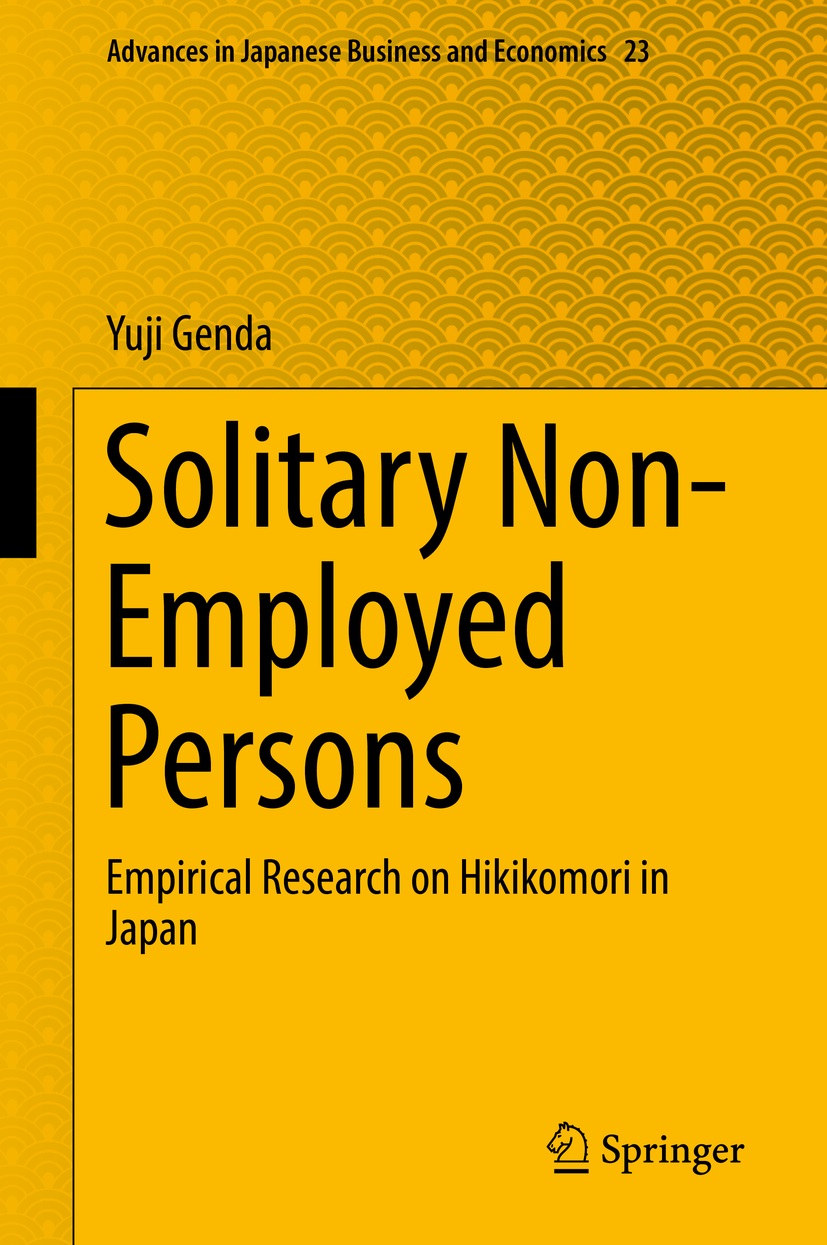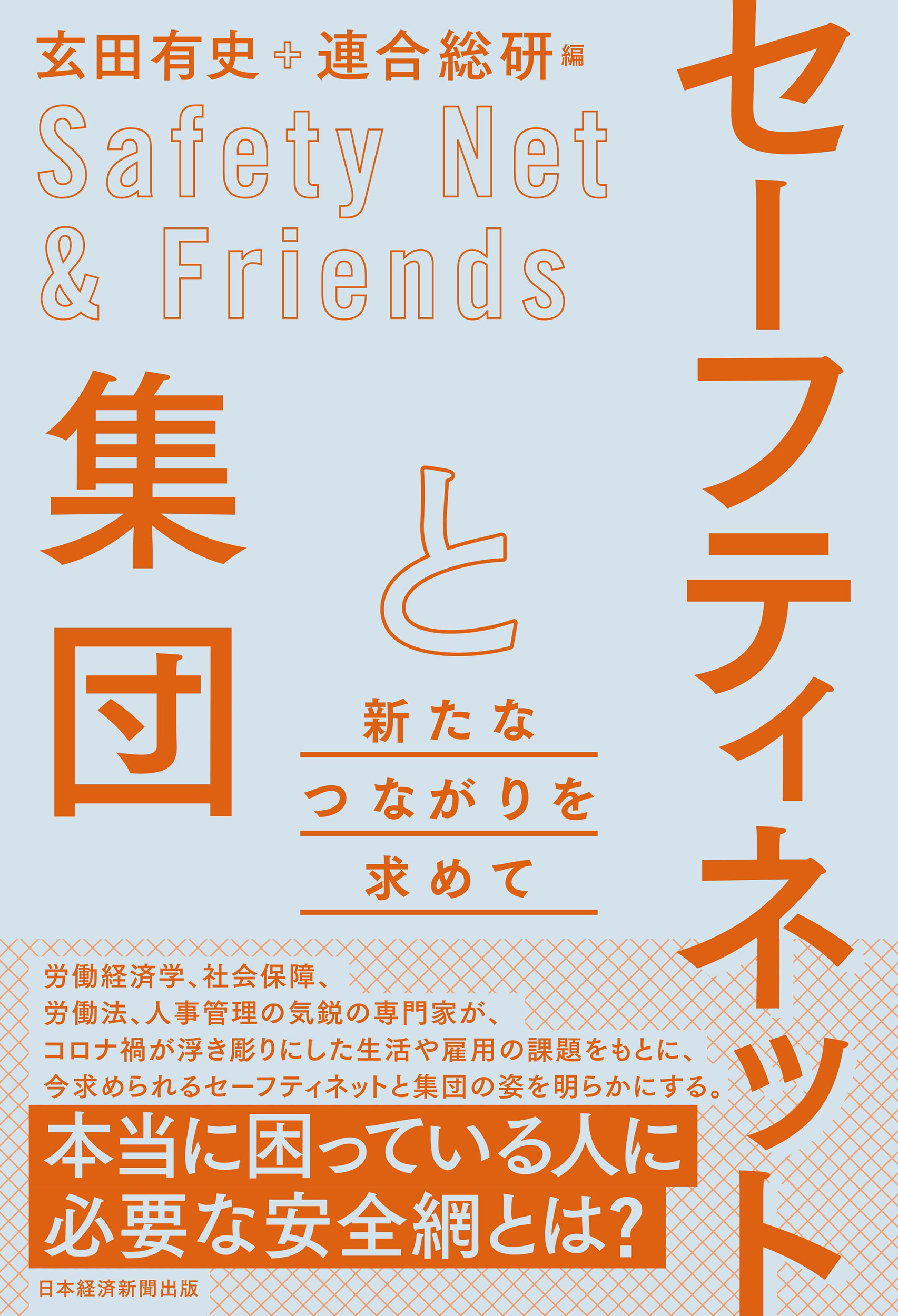
Title
Advances in Japanese Business and Economics Solitary Non-Employed Persons Empirical Research on Hikikomori in Japan
Size
124 pages
Language
English
Released
2019
ISBN
978-981-13-7786-0
Published by
Springer Nature Singapore Pte Ltd.
Book Info
See Book Availability at Library
This short monograph proposes a new concept for looking at serious non-employment, which has been increasing since the 2000s in Japan, where jobless people who suffer from social isolation are called “solitary non-employed persons” (SNEP). SNEP are defined as those persons aged 20–59 years who, unmarried, not attending school, and non-employed, normally spend all of their time completely alone or do not associate with anyone outside their families.
These SNEP are empirically examined in detail, using comprehensive micro data from time-use surveys conducted regularly by the government and an original online survey carried out by the author. Readers will be able to acquire a precise idea of social withdrawal, hikikomori in Japanese, who are now recognized to exist not only in Japan but also in some other developed countries. Hikikomori avoid participation in social activities such as schooling, employment, and social relations. They isolate themselves from society in their homes and do not interact with others outside their homes for long periods of time.
These individuals constitute a substantial component of the total population of the solitary non-employed. While several cases of hikikomori have been discussed in the past based on very few observations, SNEP can be clearly examined using the rich empirical datasets in this book. According to the Japanese Statistics Bureau’s Survey on Time Use and Leisure Activities, there were an estimated 1.55 million SNEP in 2016, a number that had almost doubled in 20 years. The proportion of individual-type SNEP who live completely alone and spend a substantial amount of their daily lives on such activities as sleeping or watching TV has reached its highest level since the mid-1990s.
As individuals, older, less-educated, and non-employed males used to be more likely to lose contact with their friends and acquaintances. However, since the early 2000s, there has been a rise in the SNEP population among young, educated, and non-employed females. Furthermore, during the 2010s in Japan, middle-aged, non-employed groups, including the “employment ice age” generation, who graduated from school in the late 1990s and the beginning of the 2000s, when the bubble economy burst and serious economic depression continued, were particularly likely to become SNEP. These empirical facts indicate that isolation has been generalized and spreading in Japan. Nowadays, being non-employed increases an individual’s risk of losing their personal human network, regardless of gender, age, education, region, or family background.
The growing population of SNEP exacerbates serious labor shortages among Japan’s shrinking population, which results in several macroeconomic problems, such as further declines in overall consumption and birthrates, and a continuous growth in the national budget deficit now and in the future. People who are considered to be “not in labor force” correspond to the non-employed people who have stopped looking for jobs while the non-employed looking for work are called “unemployed” in the statistics. The family-type SNEP, who mostly live under the protection of their families, tend to be discouraged from looking for a job during their long period of non-employment, becoming “not in labor force” rather than “unemployed”. It is ironic that family support can stand in the way of a person’s chance to achieve independence through gainful employment. If their supportive parents and siblings die, however, SNEP will essentially face hardships in their lives, and not a few inevitably will need to go on welfare, requiring huge costs with a resulting burden on the taxpayer and public loans.
This book explains that it is necessary to put into place several human development and educational policies in order to prevent the further growth of SNEP. As SNEP are isolated from society and cannot begin the process of becoming independent by themselves, the most effective path to take is to meet appropriate persons who are capable of supporting and encouraging SNEP to reconnect with society. Therefore, it is important for the government to prepare sufficient professional support outside the family, persons who can conduct an outreach strategy and provide the appropriate impetus in SNEP’s stagnant lives. In addition, this research indicates that curbing the growth of the SNEP population requires more than just employment-oriented support for adults; it should involve efforts to ensure that children and adolescents receive frequent opportunities to interact with a variety of different people in their school days, thereby improving their communication skills.
The concept of SNEP is relatively new and has yet to emerge in other countries’ research. However, a similar phenomenon of a growing number of socially isolated people, like the hikikomori and SNEP, may also frequently be observed in several countries and regions all over the world. It is possible to analyze the SNEP in each country utilizing a time-use survey like the one used in this monograph. The author will be pleased if this monograph can provide an opportunity to consider a new aspect regarding serious non-employment and help to find adequate solutions for the problem.
(Written by GENDA Yuji, Professor, Institute of Social Science / 2020)
Table of Contents
Chapter 2. The Determinants and Characteristics of SNEP
Chapter 3. The Daily Lives and Job Searches of SNEP
Chapter 4. The Past, Present, and Future of SNEP
Chapter 5. Questions and Answers About SNEP



 Find a book
Find a book



